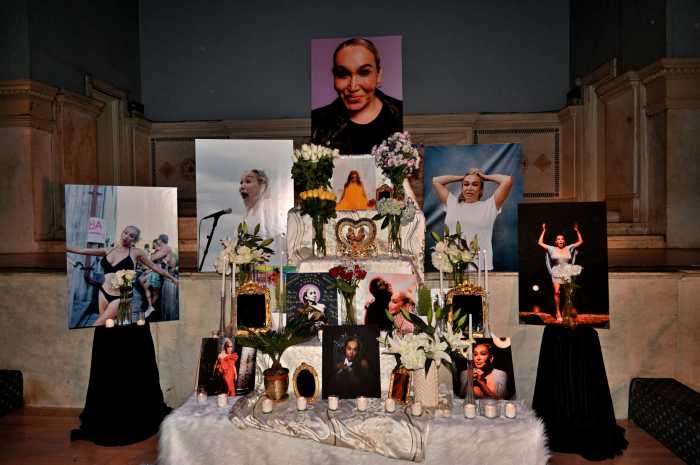New York’s highest court judges appear unconvinced by Mickey Cass’ arguments
BY DUNCAN OSBORNE | Judges on the Court of Appeals, New York State's highest bench, seemed unconvinced that the rights of a convicted killer of two gay men were violated when evidence from the first killing was used during his trial for the second killing.
In 2004, a Brooklyn jury found Mickey Cass, now 33, guilty of second-degree murder in the 2003 strangling of Victor Dombrova Neto, a 27-year-old Brazilian man. In 2005, Cass was convicted on the same charge in the 2002 strangling death of Kevin Bosinski, also 27, by a Buffalo jury.
Cass and a sibling were subjected to horrific physical and sexual abuse by their father when they were children. In statements to police and prosecutors, Cass said that he described this abuse to both victims. When Bosinski and Dombrova Neto made unwanted sexual advances, Cass said, he “lost it” and got into fights with the men, according to one court document. The stranglings occurred during those fights.
In his Brooklyn trial, he presented an extreme emotional disturbance (EED) defense that said that when he “lost it,” his state of mind was such that he did not have the intent to kill that is legally required to convict him of second-degree murder.
To counter that defense, the prosecutor argued that Cass planned both murders and pointed out their common features by playing Cass’ videotaped statement, in which he discussed both killings, and entering the Bosinski autopsy report into evidence.
“The incidents are strikingly similar,” said Joyce Slevin, an assistant district attorney in the Brooklyn district attorney’s office, during the January 5 hearing before the Court of Appeals. Those similarities “show premeditation, certainly a plan,” she added.
“If there is some kind of premeditation or forethought, he’s not acting under extreme emotional disturbance,” she said. “The fact pattern itself shows that the defendant did not act under extreme emotional disturbance.”
Representing himself, Cass has filed multiple long, often handwritten appeals with his Brooklyn trial judge and a state appellate court. He was represented by Warren S. Landau from the Appellate Advocates before the Court of Appeals. Their argument has been that the Bosinski evidence was prejudicial and should have been excluded.
“The circumstances of the Bosinski homicide… indicated that the Bosinski homicide occurred under a trigger that was consistent with a loss of control due to an extreme emotional disturbance,” Landau said on January 5. “Any similarities between the Dombrova homicide and the Bosinski homicide… didn’t tend to undermine extreme emotional disturbance… This had no probative value to undermine the EED defense.”
Generally, prosecutors may present evidence of other crimes committed by a defendant only under limited circumstances. The judge in the Brooklyn case, Gustin L. Reichbach, allowed it, writing in 2004, “Evidence of the other homicide has strong probative value as tending to rebut the defendant’s claim of extreme emotional disturbance.”
While the questions that judges ask during oral arguments do not necessarily predict how they will rule in a case, the court appeared to be unmoved by Landau’s arguments.
“Can’t it show calculation?” asked Jonathan Lippman, the chief judge on the court. “Why wouldn’t this, in this case, tend to show calculation?… Why doesn’t the earlier act go right to that point?”
The prosecution argued that Cass put himself in the same situation twice and that disproved his defense.
“What was the explanation for why he would put himself in this position again?” asked Victoria A. Graffeo, one of the seven Court of Appeals judges. “I don’t understand how the EED explains why he would put himself in the same situation a second time.”
Yet another judge, Theodore T. Jones, also hit on that theme. He asked, “What about the idea that lightning doesn’t strike twice?”
The Brooklyn prosecutor’s theory was that Cass was a serial killer who targeted gay men and that the evidence in both cases, taken together, proved that.
“The people’s theory was that your client was a calculating killer,” said Robert S. Smith, another judge. “Here they know that he did it. The question is what was in his mind when he did it.”
The judges in both cases sentenced him to the maximum 25-years-to-life, with those sentences running consecutively, meaning Cass must serve 50 years before he is eligible for parole. His earliest possible release date is in February 2054.































